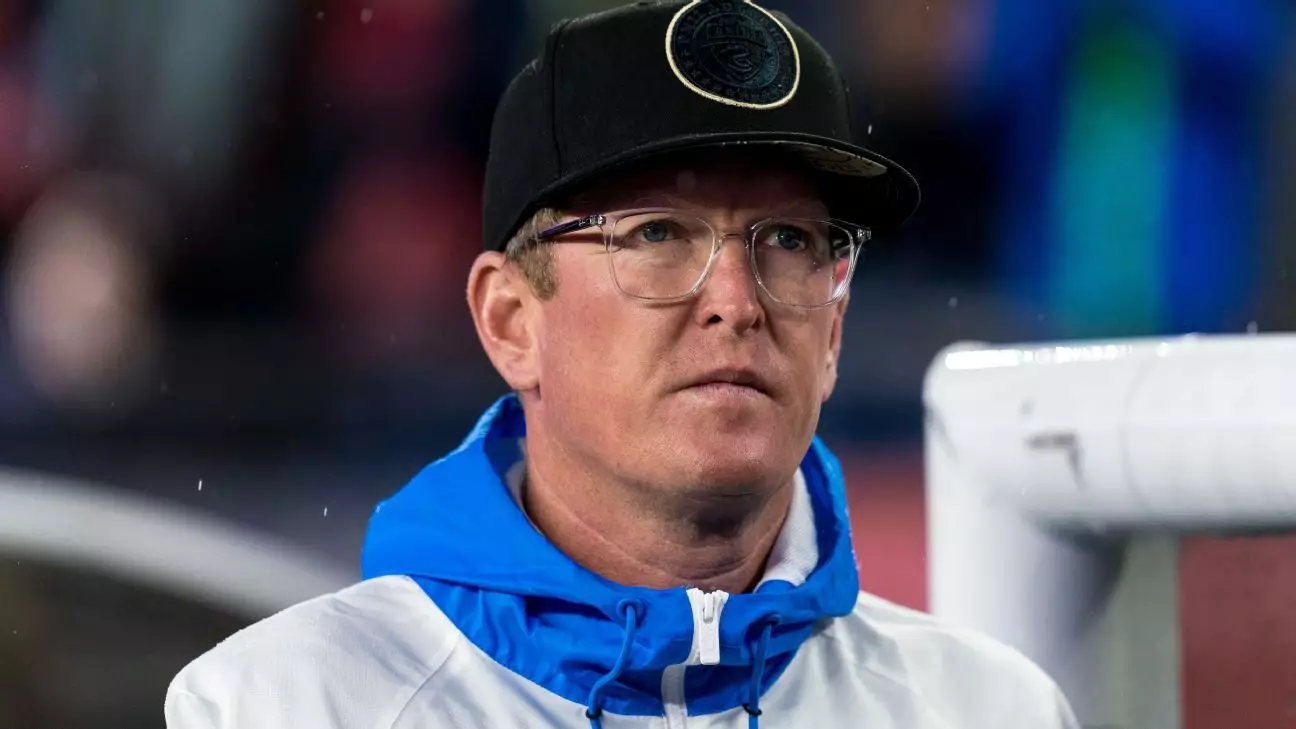Jim Curtin’s departure from the Philadelphia Union has stirred emotions and discussions in the world of Major League Soccer (MLS). After a remarkable eleven-year tenure as head coach, which included achievements like being named MLS Coach of the Year twice and significantly shaping the club’s culture, his exit came as a shocking jolt not just to fans but also to many within the organization. Described as being “blindsided,” insiders of the Union and supporters alike could only watch in disbelief as the man who had become synonymous with the club’s identity was ousted.
The Unexpected Termination: A Deep Dive
The circumstances surrounding Curtin’s termination reflect a broader narrative in sports where loyalty and performance intersect—albeit sometimes tumultuously. After a disappointing season that saw the Union miss the playoffs for the first time since 2017, the franchise’s leadership decided a change was necessary. Initial reports indicated that the management characterized the decision as a mutual parting, yet insiders have painted a picture of an unceremonious firing, revealing underlying tensions that may have led to Curtin’s downfall.
Discussions between Curtin and the Union’s sporting director, Ernst Tanner, reportedly culminated in the revelation that the organization wanted to “separate.” This abrupt meeting ended with Curtin storming out, highlighting the unanticipated nature of such a decision. The stark contrast between Curtin’s accomplishments and the organizational reaction points to deeper issues at play, particularly regarding accountability within the Union’s hierarchy.
Pundits and Players: The Weight of Internal Dynamics
Moving beyond the managerial decision itself, an examination of the broader internal dynamics sheds light on the situations that may have precipitated Curtin’s exit. Within the union, a pattern of attrition has been observed, with several key staff members departing over the years. The loss of trusted colleagues created an atmosphere of isolation for Curtin, exposing him to increased scrutiny and criticism as performance dwindled.
As various sources suggest, Tanner himself has come under fire. His control over player acquisitions has not been as effective as it once was; criticism arose over signings that failed to deliver results. Meanwhile, star academy products began their transitions to European leagues, raising questions about the sustainability of Philadelphia’s model—based on homegrown talent and shrewd financial management—in the face of intensified competition. This may have further strained Curtin’s already frail position within the club’s leadership.
For a time, the Philadelphia Union epitomized what it meant to succeed as a lower-budget team in MLS. The club carved out an identity by championing heritage, focusing on player development, and relying on astute scouting to acquire lesser-known talents and transform them into key contributors. Significant achievements, such as reaching the MLS Cup final or securing the Supporters’ Shield, showcased the Union’s ability to compete against teams with substantially higher payrolls.
However, this success cloaked an uncomfortable reality. The Union’s reliance on a limited core of academy products and cost-effective signings has its inherent risks. Player development is an unpredictable journey; not every academy graduate translates to impactful professional players. This unpredictability inevitably impacted the team’s performance when injuries occurred or when critical players left for opportunities abroad. When the Union struggled—reflecting an erosion of the competitive edge that marked their previous seasons—the finger pointed back to the manager.
As Curtin’s tenure fades into the past, the future of the Philadelphia Union remains enshrouded in uncertainty. His replacement will encounter the monumental task of reestablishing what made the club a formidable force in MLS. Curtin’s deep connection to Philadelphia, along with his understanding of the youth development framework, cultivated a winning culture that is difficult to replicate instantaneously.
Moreover, the onus now lies squarely on Tanner to rejuvenate the club’s ambitions in player acquisitions and development; his reputation has taken a hit following Curtin’s departure. While there exists the possibility he will regain acumen in scouting and player management, the fact remains that the internal dynamics and cultural shifts need mending.
With Curtin likely to attract attention from other teams, the loss of his expertise, along with the club’s historical relationships and identity, may take years to replace. It’s a curiously precarious chapter for both the Philadelphia Union and Jim Curtin—a reminder of the ever-changing narrative within professional sports. The ripple effects of this unexpected jolt will continue to reverberate long after the dust settles.
